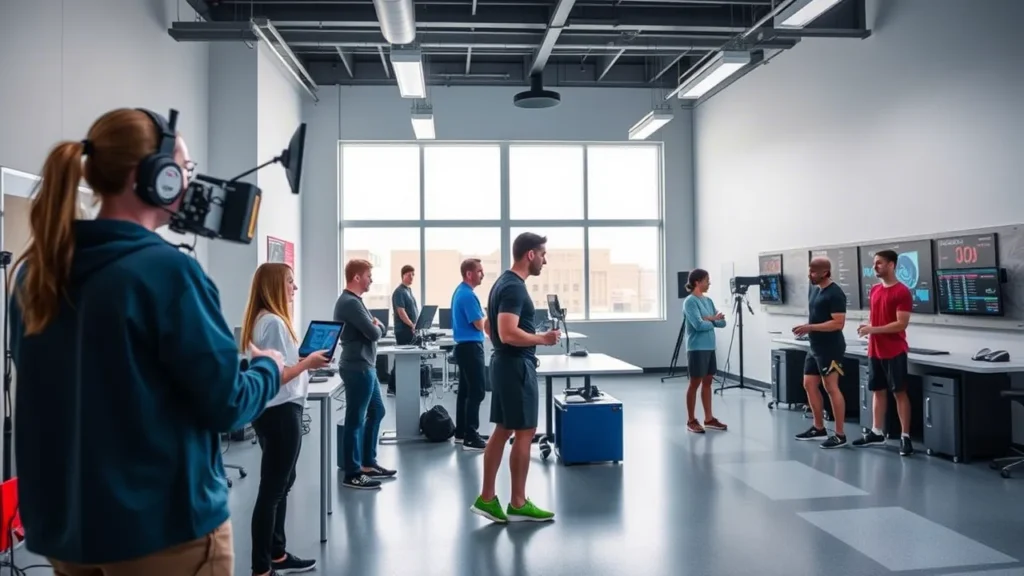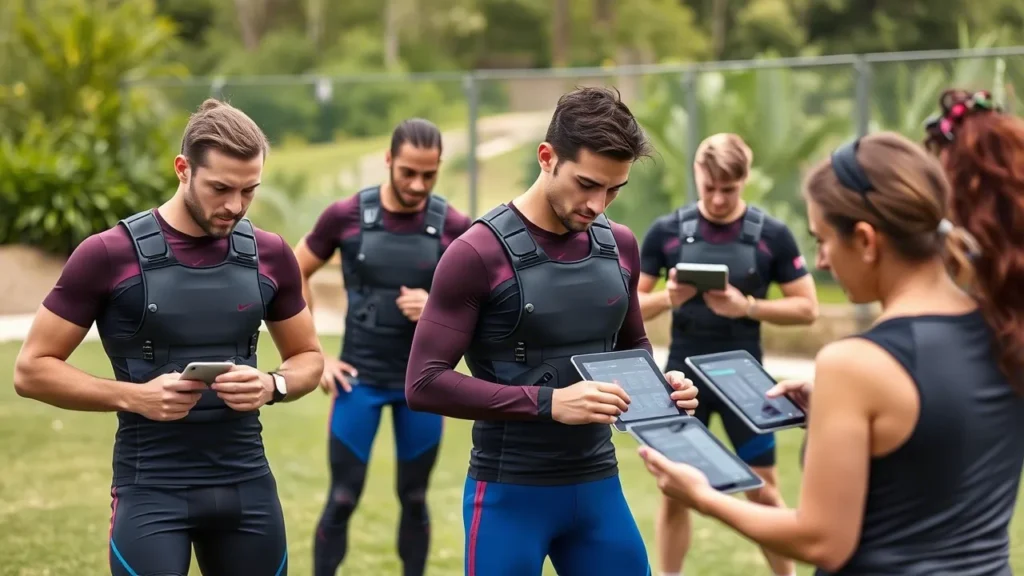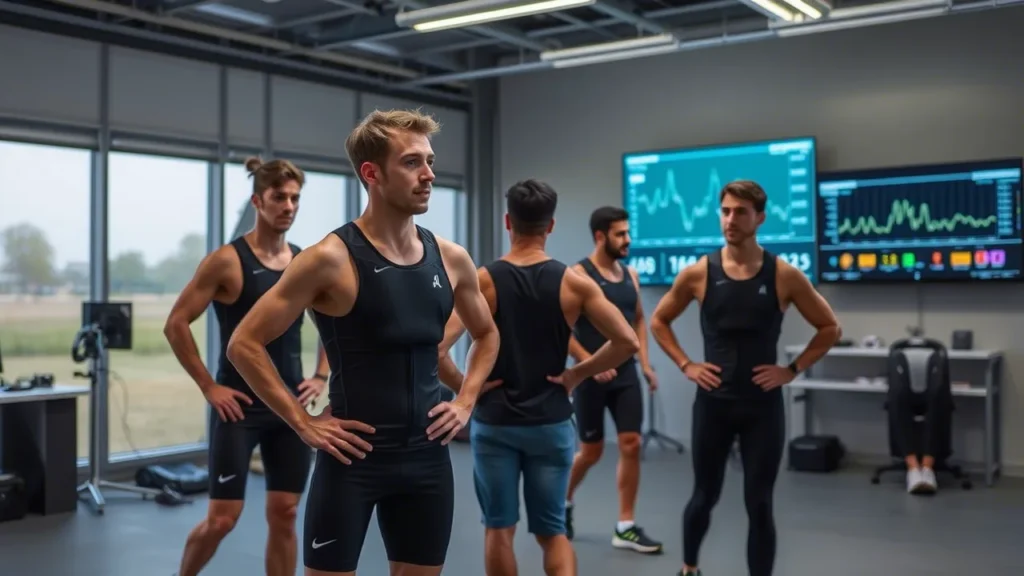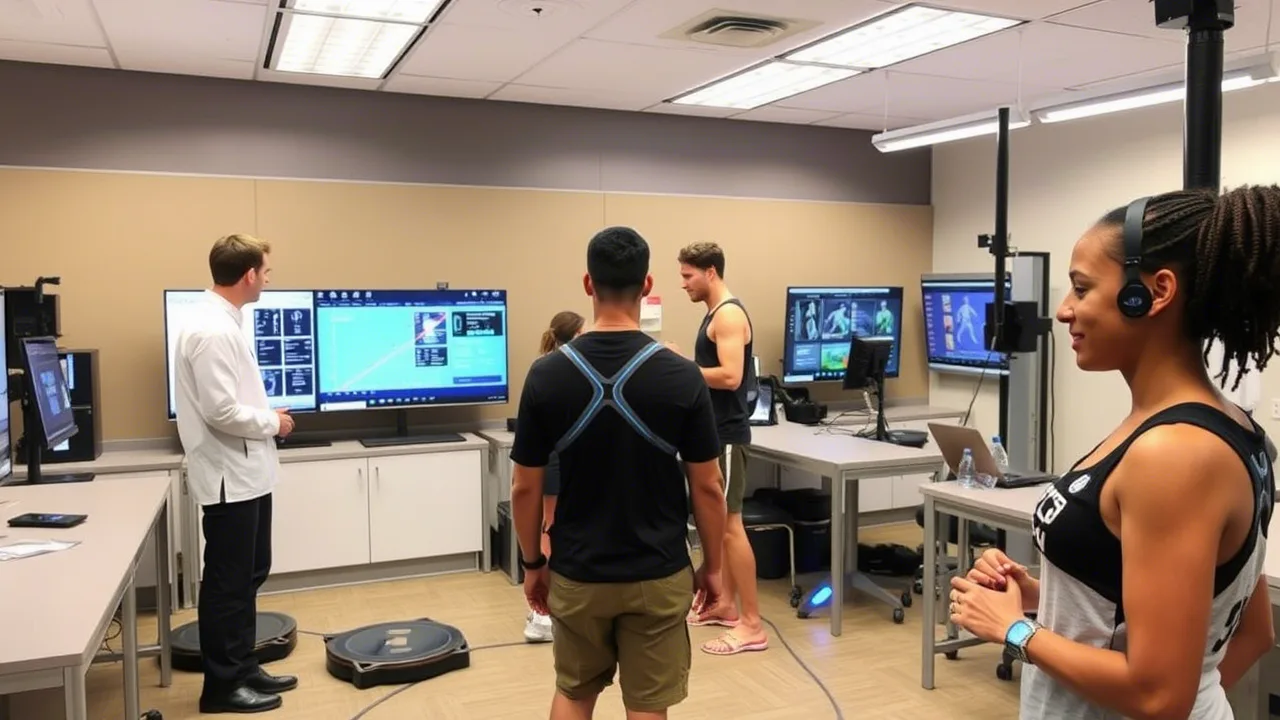The world of sports is constantly evolving, driven by an unrelenting pursuit of excellence. Whether it’s shattering records, refining techniques, or creating unforgettable experiences for fans, innovation has always been at the heart of athletic progress. In recent years, sports technology labs have emerged as game-changers in this journey.
These state-of-the-art facilities are where cutting-edge science meets the art of athleticism, paving the way for revolutionary advancements that benefit athletes, coaches, and even spectators. From wearable tech that tracks every heartbeat to data-driven strategies that enhance performance, sports technology labs are redefining what it means to excel in sports.
The Rise of Sports Technology Labs
Sports technology labs are not a new concept, but their prominence has skyrocketed over the past decade. What began as small research initiatives within universities and private organizations has now grown into sprawling hubs of innovation. These labs bring together experts from diverse fields—biomechanics, data science, material engineering, and even psychology—to tackle challenges faced by athletes and teams.
For instance, consider the role of these labs in developing advanced wearables. Devices like smartwatches and fitness trackers have become staples in the training routines of professional athletes. However, the true magic lies in the algorithms and sensors developed within sports technology labs. These innovations allow athletes to monitor everything from heart rate variability to muscle oxygen levels in real time, enabling them to fine-tune their workouts and prevent injuries.
Another key area where sports technology labs shine is in biomechanical analysis. By using high-speed cameras, motion capture systems, and force plates, researchers can study an athlete’s movements with incredible precision. This data helps identify inefficiencies in technique and suggests adjustments that can lead to significant performance improvements. For example, runners can optimize their stride length, swimmers can refine their strokes, and golfers can perfect their swings—all thanks to insights provided by sports technology labs.

Innovations That Are Changing the Game
When we talk about the innovations emerging from sports technology labs, the possibilities seem endless. Let’s explore some of the most impactful advancements that are shaping the future of athletics.
Wearable Technology
Wearable devices are perhaps the most visible outcome of research conducted in sports technology labs. These gadgets have transcended their initial purpose of tracking basic metrics like steps and calories burned. Today, they provide athletes with detailed insights into their physiological responses during training and competition. Some examples include:
- Smart Compression Garments : Equipped with embedded sensors, these garments track muscle activity and fatigue levels.
- GPS-enabled Vests : Used primarily in team sports like soccer and rugby, these vests monitor player positioning, speed, and distance covered on the field.
- Recovery Wearables : Devices like electric muscle stimulators and cooling vests help athletes recover faster after intense sessions.
Data Analytics and Artificial Intelligence
Data is the new currency in sports, and sports technology labs are leading the charge in harnessing its power. Advanced analytics platforms powered by artificial intelligence (AI) process vast amounts of information to uncover patterns and trends that were previously invisible. Coaches and trainers use these insights to make informed decisions about everything from game strategies to injury prevention.
Take basketball, for example. AI-driven tools analyze player movements during games to determine optimal shot locations, passing patterns, and defensive setups. Similarly, in baseball, machine learning models predict pitch outcomes based on historical data, giving batters a competitive edge.
Virtual and Augmented Reality
Virtual reality (VR) and augmented reality (AR) are no longer confined to gaming; they’re making waves in sports technology labs as well. VR systems allow athletes to simulate game scenarios without physical exertion, which is particularly useful for mental conditioning. Quarterbacks can practice reading defenses, while goalkeepers can hone their reflexes against virtual strikers.
On the other hand, AR enhances live events by overlaying digital graphics onto real-world environments. Imagine watching a football match through AR glasses that display player stats and play diagrams in real time. Such innovations not only improve athlete performance but also elevate the fan experience.
Advanced Materials and Equipment
Materials science plays a crucial role in the work of sports technology labs. Researchers are constantly experimenting with new materials to create lighter, stronger, and more durable equipment. Carbon fiber frames for bicycles, aerodynamic swimsuits, and shock-absorbing running shoes are just a few examples of how advanced materials have transformed sports.
To illustrate the impact of these innovations, consider the following table highlighting breakthroughs in sports equipment:
| Sport | Innovation | Impact |
|---|---|---|
| Cycling | Carbon Fiber Frames | Reduced weight, increased speed |
| Swimming | Full-body Polyurethane Suits | Improved hydrodynamics, faster times |
| Running | Energy-returning Midsoles | Enhanced propulsion, reduced fatigue |
| Tennis | Graphene-infused Rackets | Greater strength, improved control |
The Broader Impact of Sports Technology Labs
While the immediate beneficiaries of sports technology labs are athletes and teams, their influence extends far beyond the playing field. Here’s how these labs are making a broader impact:
Injury Prevention and Rehabilitation
Injuries are an inevitable part of sports, but sports technology labs are working tirelessly to minimize their occurrence and severity. By analyzing movement patterns and stress points, researchers can design training programs that reduce the risk of common injuries. Additionally, rehabilitation technologies like robotic exoskeletons and virtual therapy platforms are helping injured athletes recover faster and return to peak form.
Accessibility and Inclusivity
One of the most exciting developments in sports technology labs is their focus on inclusivity. Adaptive sports equipment, such as prosthetic limbs designed for running or specialized wheelchairs for basketball, empowers athletes with disabilities to compete at the highest levels. Moreover, affordable versions of high-tech gear are being developed to ensure that athletes from all backgrounds have access to cutting-edge tools.
Fan Engagement
Sports technology labs aren’t just about enhancing athletic performance—they’re also transforming how fans interact with their favorite sports. Immersive broadcasting technologies, such as 360-degree cameras and holographic displays, bring viewers closer to the action than ever before. Meanwhile, mobile apps and social media platforms powered by AI offer personalized content tailored to individual preferences.
Environmental Sustainability
As global awareness of environmental issues grows, sports technology labs are stepping up to promote sustainability. Researchers are developing eco-friendly alternatives to traditional sports equipment, such as biodegradable tennis balls and recyclable jerseys. Furthermore, energy-efficient stadiums equipped with solar panels and rainwater harvesting systems are becoming increasingly common.

Challenges Facing Sports Technology Labs
Despite their many achievements, sports technology labs face several challenges that must be addressed to sustain their momentum. One major hurdle is the cost of research and development. Cutting-edge technologies often require significant investment, which can be prohibitive for smaller organizations. Collaboration between academia, industry, and government agencies may help bridge this gap.
Another challenge is ensuring ethical use of technology. For example, concerns have been raised about the potential misuse of AI in scouting processes or the reliance on performance-enhancing wearables that could blur the line between natural talent and technological advantage. Establishing clear guidelines and regulations will be essential to maintaining fairness and integrity in sports.
Finally, there’s the issue of accessibility. While elite athletes and professional teams reap the benefits of innovations from sports technology labs, grassroots programs and amateur athletes often lack access to these resources. Bridging this divide will require creative solutions, such as partnerships with community organizations and educational institutions.

The Future of Sports Technology Labs
Looking ahead, the future of sports technology labs appears incredibly promising. Emerging technologies like quantum computing, nanotechnology, and brain-computer interfaces hold immense potential for further advancements. For instance, quantum simulations could revolutionize training methodologies by modeling complex scenarios with unparalleled accuracy. Nanomaterials might enable the creation of ultra-lightweight yet indestructible equipment. And brain-computer interfaces could allow athletes to control devices with their thoughts, opening up entirely new dimensions of interaction.
Moreover, the integration of sports technology labs into everyday life is likely to accelerate. As wearable devices become more affordable and user-friendly, recreational athletes and fitness enthusiasts will increasingly adopt them to enhance their own performance. Schools and universities may also incorporate findings from sports technology labs into their curricula, fostering a new generation of tech-savvy athletes and researchers.
Conclusion
Sports technology labs represent the intersection of passion, science, and innovation. They embody humanity’s relentless quest for excellence and our ability to overcome limitations through ingenuity. Whether it’s improving athletic performance, preventing injuries, or engaging fans, these labs are leaving an indelible mark on the world of sports.
As we continue to witness breathtaking feats on fields, courts, and tracks around the globe, let us remember the unsung heroes behind the scenes—the scientists, engineers, and visionaries who dedicate their lives to pushing the boundaries of what’s possible.
The next time you marvel at a record-breaking sprint or a perfectly executed jump shot, take a moment to appreciate the role that sports technology labs played in making it happen. After all, the future of sports isn’t just about breaking barriers—it’s about reimagining them altogether.
